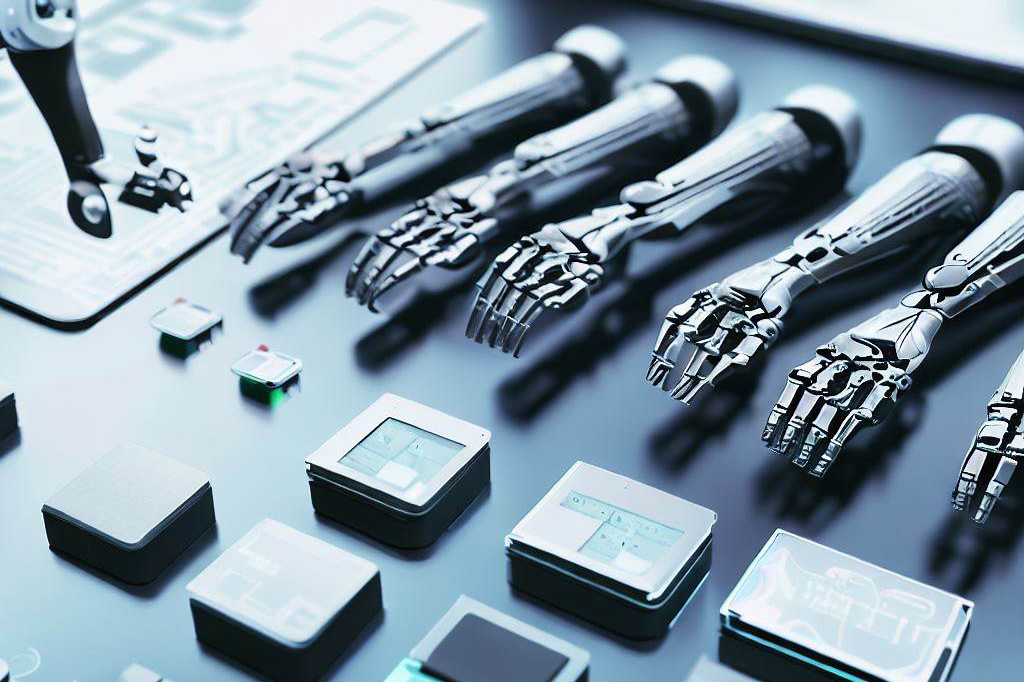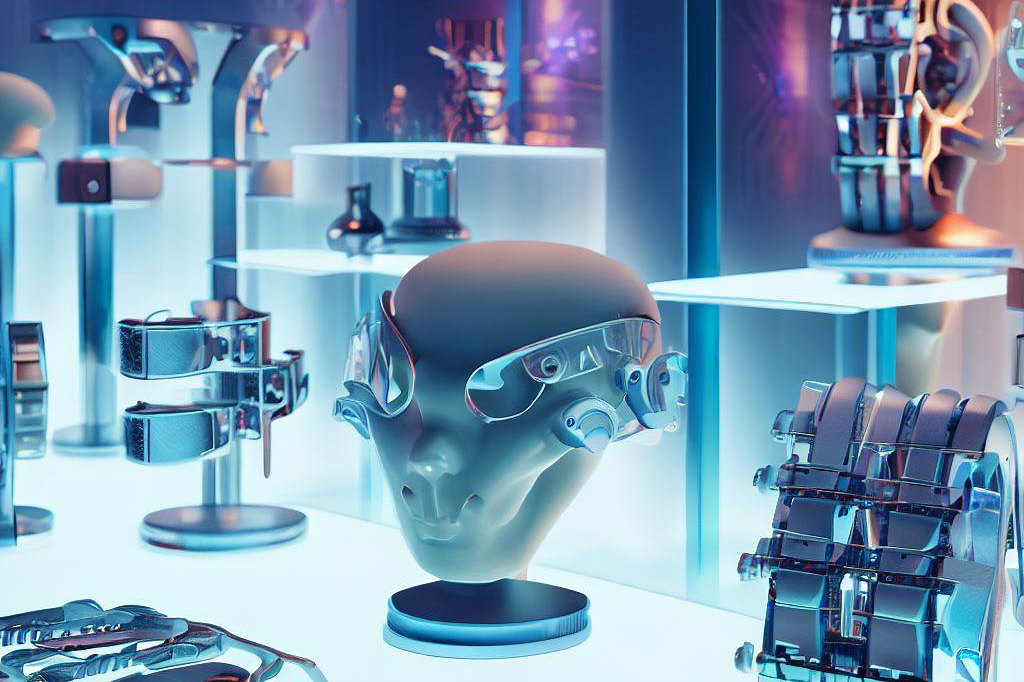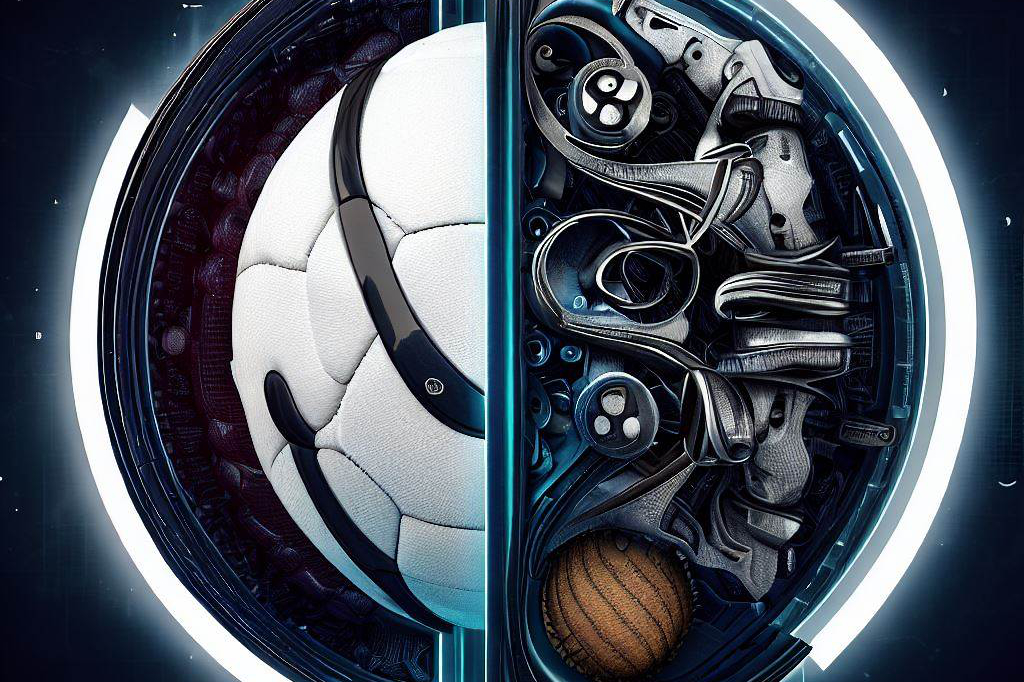Human augmentation is the use of technology or other interventions to enhance human capabilities beyond what is considered normal or natural. In sports, human augmentation has the potential to significantly improve athletic performance, but it also raises concerns about fairness and the integrity of the sport.
Fair play is a fundamental aspect of sports that ensures that all athletes have an equal opportunity to succeed, regardless of their physical abilities or other factors. With new technologies emerging all the time, the potential impact of human augmentation on sports cannot be ignored.
From prosthetics to gene doping, advancements in technology may give athletes an unfair advantage over their competitors.
It is important for athletes, coaches, regulators, and fans alike to consider the ethical implications of these technologies and work together to ensure that sports remain fair and accessible for all.
Definition of Human Augmentation

Human augmentation can take many forms in sports.
Physical enhancements include prosthetics such as blades for running or exoskeletons for strength training. Gene doping involves altering an athlete’s genetic makeup in order to enhance their physical attributes, such as strength or endurance.
Cognitive enhancements include brain stimulation or smart drugs that improve reaction time and cognitive function.
The goal of human augmentation in sports is typically performance enhancement – giving athletes a competitive edge over others who do not use these technologies.
While some argue that this is an inevitable result of technological advancements, others question whether this kind of enhancement truly aligns with what sports are meant to represent.
The Importance of Fair Play in Sports

Fair play has long been a cornerstone principle in sports – from amateur games played on neighborhood playgrounds to international competitions featuring elite athletes from around the world.
The concept refers to ensuring that everyone playing within a game follows established rules equally so as not to give anyone an unfair advantage.
Sports are meant to be a celebration of talent, skill, and dedication, and the spirit of fair play is essential to maintaining this.
It ensures that athletes are rewarded for their individual abilities, rather than any artificial enhancements they may have used.
Fair play allows everyone to compete on a level playing field and upholds the integrity of the sport.
The Potential Impact of Human Augmentation on Sports

The potential impact of human augmentation on sports is complex and multifaceted.
On the one hand, these technologies could help athletes who have disabilities or injuries participate at a higher level. For example, prosthetics can allow amputees to run competitively in track and field events.
Gene doping might one day make it possible for an athlete with weaker muscles than a typical person to become as strong as or stronger than an average athlete.
On the other hand, human augmentation could threaten the concept of fairness that is so critical in sports.
Some people argue that an athlete who uses technology or other interventions to enhance their performance has an unfair advantage over those who do not – even if it is legal under current regulations.
The potential impact of human augmentation on sports continues to be debated by experts and stakeholders across different sports around the world.
Types of Human Augmentation in Sports

Physical Enhancements
Physical enhancements involve the use of technology to enhance an athlete’s physical abilities. Some examples of physical enhancements are prosthetics, exoskeletons, and gene doping.
Prosthetics have been used in sports for decades and have provided amazing opportunities for athletes with disabilities to compete at high levels.
A famous example is Oscar Pistorius, also known as the “Blade Runner,” who competed in the 2012 Olympics using carbon fiber prosthetics.
Exoskeletons are wearable devices that support and augment human movement.
They can help reduce fatigue and increase endurance. Exoskeletons are still in development, but they show great potential for use in sports such as cycling or long-distance running.
Gene doping is the use of gene therapy to enhance physical performance by altering an athlete’s genes. Although it is not yet a common practice, gene doping presents a significant threat to fair play in sports as it could potentially create “superhumans” with enhanced abilities beyond their natural limits.
Cognitive Enhancements
Cognitive enhancements focus on improving an athlete’s mental abilities to perform better under pressure or make better decisions during competition.
Brain stimulation techniques such as transcranial direct current stimulation (tDCS) have been shown to improve reaction times and decision-making skills.
Smart drugs or nootropics are drugs that improve cognitive function by enhancing memory, focus, and concentration.
They have become popular among students seeking academic advantages but could easily be adapted for athletic purposes as well.
While cognitive enhancers do not directly enhance physical ability like physical enhancers, they can give athletes significant advantages over their competitors by improving their mental state during competition.
Overall, both types of human augmentation present unique benefits and risks when applied to sports performance enhancement.
Benefits and Risks of Human Augmentation in Sports

Improved Performance and Recovery Time
One of the most obvious benefits of human augmentation in sports is that it can significantly improve an athlete’s performance. For example, prosthetic limbs have allowed athletes with physical disabilities to compete at a higher level than ever before.
Similarly, gene doping could potentially enhance an athlete’s endurance or muscle mass beyond what is naturally possible. In addition to performance enhancement, human augmentation could also help athletes recover from injuries more quickly.
For example, stem cell therapy has shown promise in treating a variety of sports-related injuries, including tendonitis and rotator cuff tears. However, it’s important to note that while improved performance and recovery time may be desirable outcomes for individual athletes, they can also undermine the fundamental principles of fair play and equal competition.
Increased Risk of Injury or Harm to Athletes
Another significant risk associated with human augmentation in sports is the potential for injury or harm to athletes.
For example, some types of exoskeletons can put additional strain on an athlete’s muscles and joints, increasing the risk of injury.
Similarly, while gene doping has the potential to enhance an athlete’s physical abilities beyond what is naturally possible, there are also significant dangers associated with this practice.
Gene doping can cause a variety of negative side effects, ranging from heart problems to cancer.
It’s important that athletes and coaches carefully consider these risks before deciding to pursue human augmentation as a means of enhancing performance.
Ethical Concerns Regarding Fairness and the Integrity of the Sport
Perhaps the most complex issue surrounding human augmentation in sports is its potential impact on fairness and the integrity of competition. If some athletes are able to use technology or drugs to enhance their abilities beyond what is naturally possible, then others may be unfairly disadvantaged. Furthermore, there are concerns about the long-term consequences of allowing human augmentation in sports.
If we allow athletes to use technology or drugs to enhance their abilities today, where do we draw the line tomorrow?
What happens when technology becomes so advanced that it blurs the line between what is natural and what is artificial?
Ultimately, it’s up to athletes, coaches, and sports organizations to carefully consider these ethical concerns before deciding whether or not to pursue human augmentation in sports.
Current Regulations on Human Augmentation in Sports
Human augmentation technologies are advancing at a rapid pace, and it can be challenging to keep up with the latest developments and their implications for sports. At present, there are some regulations in place to govern human augmentation in sports, but they vary depending on the type of technology involved.
The World Anti-Doping Agency (WADA) has established regulations for performance-enhancing drugs, while the International Paralympic Committee (IPC) has its own guidelines regarding prosthetics.
However, there is currently a lack of regulation for emerging technologies such as gene doping.
World Anti-Doping Agency (WADA) Regulations on Performance-Enhancing Drugs
Performance-enhancing drugs have been a concern in sports for many years. These substances may include anabolic steroids or hormone treatments that increase muscle mass and strength, blood doping agents that boost stamina by increasing red blood cell counts, or stimulants that enhance focus and endurance.
Such substances offer athletes an unfair advantage over their competitors and can also pose significant health risks. To combat the use of performance-enhancing drugs in sports, WADA has developed testing protocols and banned certain substances.
Athletes who test positive for banned substances face penalties such as suspensions or disqualifications from competitions. However, some athletes continue to use these substances despite the risk of detection and punishment.
International Paralympic Committee (IPC) Regulations on Prosthetics
Prosthetic limbs have become increasingly sophisticated in recent years, offering individuals with physical disabilities greater mobility and freedom than ever before. However, these advancements have also raised concerns about fairness in athletic competition.
In response to these concerns, the IPC has established guidelines regarding prosthetic limbs’ size and shape that are allowed in Paralympic events.
The IPC recognizes three categories of prosthetic devices: running blades (for lower limb amputees), prosthetic arms (for upper limb amputees), and sitting devices (for athletes in wheelchairs).
The guidelines dictate that the prosthetic device should not offer a significant advantage over the athlete’s natural limbs and should not exceed certain length or weight requirements. While these regulations have been successful in ensuring fair competition, they can be difficult to enforce because of the wide variety of prosthetic devices available.
Lack of Regulation for Emerging Technologies Such as Gene Doping
Gene doping is an emerging technology that involves altering an athlete’s DNA to enhance their physical or cognitive abilities. Gene doping poses unique challenges for sports organizations because it is difficult to detect and could potentially have long-term health consequences for athletes. However, there are currently no specific regulations governing gene doping in sports.
Some experts argue that gene doping could become widespread in sports if left unregulated, as it offers a significant advantage over other forms of human augmentation. However, others believe that regulating gene doping will be challenging because the science behind it is constantly evolving, making it challenging to develop effective testing strategies.
Case Studies: Examples of Human Augmentation in Sports

Oscar Pistorius and his prosthetic legs
Oscar Pistorius, also known as the “Blade Runner,” is a South African former sprinter who competed in the Olympic Games using prosthetic legs. He was born with a congenital condition that caused the amputation of both his legs below the knee at just 11 months old.
Despite this, Pistorius became an international athlete and set world records in the Paralympic Games.
In 2007, questions arose about whether Pistorius’s prosthetic legs gave him an unfair advantage over other athletes.
These concerns led to a ban on his participation in able-bodied athletic competitions by the International Association of Athletics Federation (IAAF). However, after scientific studies were conducted to assess whether his prosthetics provided any extra advantage, the ban was lifted in 2008.
Pistorius’s case sparked a heated debate about human augmentation and fair play in sports. While he argued that his prosthetics merely leveled the playing field for him, critics contended that he had an unfair advantage due to the increased stride length and stride frequency provided by his blades.
Lance Armstrong and his use of performance-enhancing drugs
Lance Armstrong is a retired American professional cyclist who won seven consecutive Tour de France titles between 1999 and 2005. He survived testicular cancer and became an inspiration to many before it was revealed that he had used performance-enhancing drugs (PEDs) during his cycling career.
Armstrong’s case highlighted another aspect of human augmentation in sports: the use of PEDs. By taking banned substances such as EPO (erythropoietin) or testosterone, athletes can boost their endurance, strength, or speed beyond what they would be capable of naturally.
The use of PEDs is strictly prohibited in sports, and athletes who are caught using them can be banned from competition or stripped of their titles. Armstrong was ultimately stripped of his seven Tour de France titles, along with other accolades and medals he had won during his career.
The cases of Oscar Pistorius and Lance Armstrong illustrate the complex issues surrounding human augmentation in sports. While Pistorius’s prosthetic legs were deemed not to offer an unfair advantage after rigorous study, the use of PEDs by Armstrong and other athletes is widely considered cheating.
As technology advances, new forms of human augmentation will emerge that may further blur the line between natural ability and enhanced performance. It remains essential for sports organisations to stay vigilant about enforcing regulations that maintain a level playing field for all athletes, while also ensuring that innovations that could benefit disabled athletes are appropriately accommodated.
Balancing Performance Enhancement and Fair Play

The importance of maintaining a level playing field for all athletes
One of the core values of sports is fair play, where athletes are expected to compete on an equal footing.
The use of human augmentation in sports can undermine this principle, as some athletes may have access to enhancements that give them an unfair advantage over others. This can create an uneven playing field that can ultimately harm the integrity and credibility of sports.
To maintain fairness in sports, it is essential to regulate the use of human augmentation technologies. This means creating a level playing field where all athletes have access to the same technologies and are subjected to well-defined rules and regulations.
It may be challenging to quantify precisely what constitutes a fair or unfair enhancement. Therefore, ongoing discussion among stakeholders such as scientists, regulators, and sporting bodies is crucial for determining appropriate regulations that balance performance enhancement while preserving fair play.
The need for ongoing discussion and regulation surrounding human augmentation in sports
As technology continues to advance at breakneck speed, it is becoming increasingly important to consider how human augmentation will impact sports now and in the future. However, devising appropriate regulations will not be easy because new technologies are continually emerging that blur boundaries between performance-enhancing drugs (PEDs) or natural abilities.
For example, gene doping -the use of genetic material or gene-editing techniques- could help produce superior athletes with increased resistance to fatigue or better muscle development. It’s difficult to distinguish this from treating genetic disorders or injuries, making the decision about what constitutes legitimate medical treatment versus performance enhancement.
By creating open dialogue and setting clear guidelines for human augmentation use, it is possible to preserve the integrity of sport while also advancing the field of human augmentation.
Final Thoughts

Human augmentation in sports is a complex and controversial topic. While there are certainly potential benefits to using technology to enhance athletic performance, there are also significant risks and ethical concerns that must be addressed.
As technology continues to develop at an ever-increasing pace, it is essential that we take the time to consider the impact of these advancements on our society. The potential benefits of human augmentation in sports cannot be ignored.
Improved performance, faster recovery times, and increased safety for athletes are all desirable outcomes. However, we must also consider the negative consequences of the unregulated use of these technologies.
For example, allowing gene doping or other forms of physical enhancement could create an uneven playing field and jeopardize the integrity of the sport. Ultimately, it will be up to sports organizations and governing bodies to strike a balance between performance enhancement and fair play.
The World Anti-Doping Agency (WADA) and International Paralympic Committee (IPC) have already taken steps towards regulation, but ongoing discussions and updates will be necessary as new technologies continue to emerge. While caution is certainly warranted when it comes to human augmentation in sports, we should not dismiss the potential benefits outright.
If used responsibly and ethically, these technologies could help athletes achieve their full potential while maintaining fairness for all competitors on the playing field. It is up to us as a society to ensure that we proceed thoughtfully and with clear guidelines in place for their use.

C M, a seasoned editor, journalist, and consultant, is deeply fascinated by the convergence of technology, space, and the future of humanity.
With a particular interest in transhumanism, futurology, and the philosophical and ethical dimensions of these domains, C M serves as the lead contributor to TranscendSphere and SpaceSpotlight.
When not penning insightful articles on these rapidly evolving fields, C M indulges in their love for podcasts and books, proudly embracing their status as a ‘Happy Nerd Extraordinaire!’





